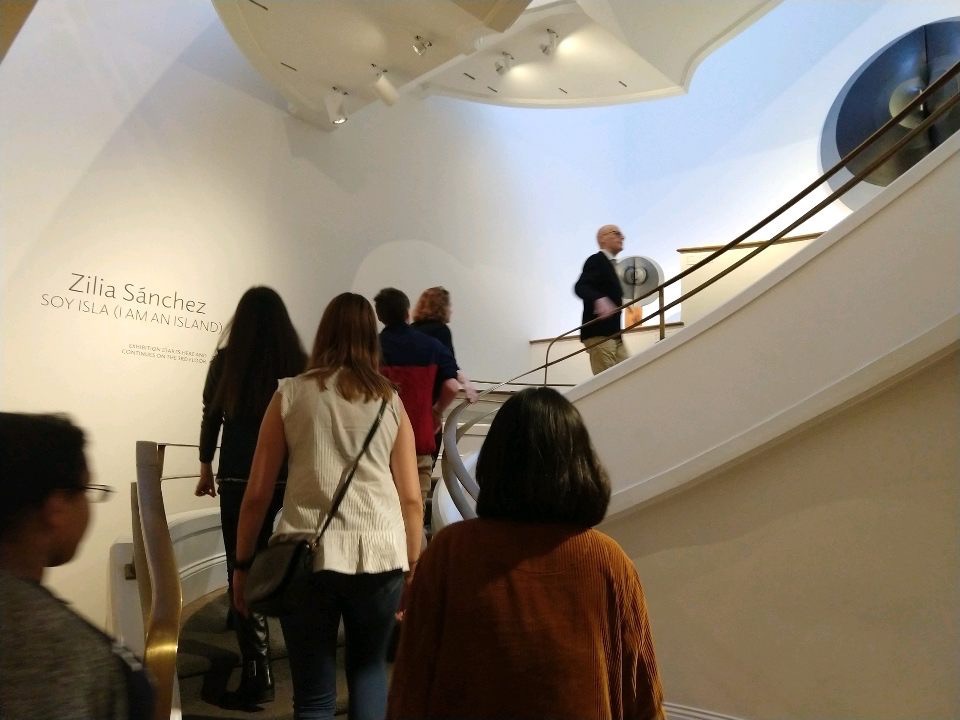The Currents: Water in African Art exhibition at the Smithsonian National Museum of African Art featured a wide variety of artistic works which revealed the ways in which water imagery influenced the cultures of different African groups. While the ideas of water and movement were related in many ways, the display of Akan weights suggested the direct impact that bodies of water can have on the migration of material goods, cultures, and people.
At the museum, the curator displayed 16 Akan gold-measuring weights, each modeled after an aquatic animal, in a glass case. The Akan people crafted these weights out of a copper alloy sometime in the 18th or 19th centuries along the coasts of Ghana and Côte D’Ivoire. This region was known for its abundance of gold, and the trade of such a precious material “tie[d] the peoples of Ghana into a trans- Saharan commercial network that stretched from the West African forest zone across the Sahara to ports on the Mediterranean” (Berry xxx). Even before the arrival of European powers, movement of peoples across the African continent was necessary for these types of exchanges to take place. The fact that the Akan dominated the gold trade suggested that they controlled the different elements of the transactions as well. For example, local goldsmiths, or adwumfo, made each weight by hand under the direction of its future owner. Since “nearly every Akan male of any standing possessed a certain amount of the weights,” the goldsmiths likely designed the weights to reflect the cultural beliefs of powerful figures in their society (Arhin 94). The use of cultural imagery in the act of trade allowed the Akan people to exchange ideas along with the gold as they came into contact with other migratory groups.
Since the owners of the weights often dictated the form in which they were made, many of the gold weights contained water imagery inspired by Akan proverbs. In the display at the National African Art Museum, the most popular shapes were those of alligators, fish, and crab claws. The frequency of water-related imagery indicated the significant influence that proximity to water had on the cultural values of the Akan people. In the traditional proverbs, water carried general associations of “fluidity, flexibility, and movement between worlds;” however, the exact meanings of such symbols were somewhat subjective (“Currents”). This degree of ambiguity allowed both the weight’s owner and those who saw it during gold trading to draw their own conclusions about the imagery. Even if someone outside of the Akan culture came into contact with the weights, they could still understand the water images’ relationships to motion without the context of the proverbs. With that being said, the creators of the exhibition gave viewers short interpretations of some of the weights; a fish in a crocodile’s mouth suggested that despite hard work, “the benefits might go to someone stronger,” and the crab claws symbolized “surprising weapon-like strength” (“Currents”). Regardless of one’s understanding of the proverbs which inspired the weights, their water-inspired design reflected the importance of movement and fluidity to Akan culture.
The other way in which the Akan gold weights reflected ideas about migration was through their connection to the slave trade. While these small objects did not cause the slave trade themselves, the arrival of Europeans hoping to trade for gold ultimately developed into the trade of enslaved people. The first Europeans to arrive on the Gold Coast were the Portuguese in the late 15th century, but many other nations followed suit in the centuries after (Berry xxx). This high demand for gold required the Akan to increase the speed with which they mined, and in order to do so, they enslaved other African groups. In this instance, the term slaves “ could mean simply subjects, or include free men”; regardless, many of them were migrants to the region (Arhin 92). This cheap labor source allowed the Akan gold traders to increase both their economic and cultural interactions with the arriving Europeans. As more and more Europeans traveled to West Africa to trade, the focus of the exchange shifted from gold to slaves. By the end of the 17th century, “slaves replaced gold as the staple of the trade” as a result of “the demand for labor in the Americas” (Arhin 95; Berry xxx). Europeans began to control the region and forced many Africans to migrate, thus representing the loss of autonomy and identity that could result from a clash of cultures. In this historical context, the Akan gold weights symbolized the beginnings of a massive example of forced migration.
The Akan gold weights ultimately represented the notion of migration on both a metaphorical and a literal level. On the one hand, the imagery used by the goldsmiths in shaping the weights suggested the importance of water to the Akan culture. Given that water allowed for the movement of goods and people across far distances, its influence on the material objects produced in the region indicated the value placed on motion and fluidity. On the other hand, the gold weights served a significant historical role in the migration of people to meet the demands of first the gold trade and then the slave trade. Diverse cultures came into contact as a result of the exchange of goods and labor in West Africa, and the weights represented one aspect of this process. The Akan gold weights hinted at the ways in which water’s connection to migration can impact many different facets of a culture or identity.
— Karen Fleming and Casey Murano
